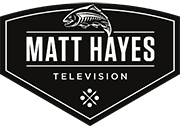
Winter tips for more fish
Keep catching in the cold
River water in town centre stretches is often warmer than out in the sticks and the fish know this. Coupled with a supply of free food from the duck-feeding public and it makes these urban areas THE place to head for when the cold strikes. Bridges, boats and boat moorings, locks and marinas are all prime hot spots.
Cold water is clear water and that means the fish won’t be close in on any type of venue. Always try and fish as far as you comfortably can, with rod and line better than the pole if it’s gin clear.
Think about your targets. When it’s freezing there’s no point targeting fish that won’t feed. Four species that will feed in sub-zero temperatures are chub, pike, dace and grayling.
When faced with open water, it can be a needle in a haystack job to locate the fish. Casting around is your only realistic option and by covering several points in your swim, you should locate an area with a few fish in it. Give each spot around 20 minutes before trying elsewhere.
Chopped lobworms far out-score dendrabaeonas during the colder months of the year, so try cutting a few up and mixing them with casters if you’re after bonus fish. Cupping in groundbait the consistency of soup is another good tip for coldwater commercial fishing.
When fishing for pike and perch in winter, try incorporating a maggot/blockend feeder which has been crammed full with cotton wool or felt soaked in a liquid additive or fish oil. This will then leak the fluid into the water, attracting the fish but not filling them up. As the temperatures really plummet, it can pay to use winterised fish oil which will disperse even in the coldest conditions. This method is a lot cleaner and easier than injecting your deadbaits with flavoured oils.
On rivers, regular loosefeed is necessary but this can spread the fish down the peg. When this happens, especially if the water is clear, try fishing well down the swim. A stick float or waggler set up will help you cover the whole swim. Alternatively, try flicking a light straight lead rig down the peg.
Overcast conditions are almost always better than bright blue skies and sunshine, especially for species such as perch, roach and chub. If your only option is to fish during cloudless days, then it can pay just to fish for a couple of hours either side of dawn and dusk when low light levels give the fish confidence to browse for food.
Bites on commercials in winter are a lot slower than in summer. Sometimes your float will dip less than half an inch and hold there. That’s all.
When big carp fishing don’t neglect zig rigs – they are not just a warm weather tactic. In cold conditions the fish will search out the warm layer of water known as the thermocline because this is where they feel most comfortable. A buoyant hookbait positioned in this layer of water will often prove too much for a carp to resist, whereas a bait on the lakebed can easily be ignored.
Perch hunt in packs and like to ‘herd’ food fish where they remain on the outskirts of the shoal were they wait in ambush. Feed maggots to tempt a shoal then present your bait on the outskirts.
When legering in extreme temperatures it can pay to twitch occasionally. Pike sometimes lay alongside a deadbait, refusing to take it. A slight twitch of the bait can trigger the fish to take
A light bomb rod comes into its own in the colder months on commercials. It allows you to search out your swim without spreading bait all over the place. If you choose to fish to an island, cast around a rod-length short because the fish will be in the deeper water at the bottom of the shelf.
